
El picozapato (Balaeniceps rex Gould, 1850) es un gran ave pelecaniforme, el único género vivo (taxonomía) de la familia Balaenicipitidae, es un ave prehistorica la cual mide 1.20 m de longitud y hasta 1.50 m de alto, siendo las hembras ligeramente más pequeñas, Habita la zona este y tropical de África en pantanos y riberas, desde Sudán hasta Zambia. Concretamente se le encuentra en: República Centroafricana, Congo, Ruanda, Sudáfrica, Sudán, Tanzania, Uganda y Zambia, Se le puede encontrar en Etiopía, Cría y se alimenta en pantanos que se inundan estacionalmente donde la vegetación predominante es una mezcla de papiro, juncos, totoras o eneas y hierbas. Se le encuentra a menudo en áreas con abundante vegetación flotante como el papiro; también usa pantanos no permanentes sin papiro en Malagarasi (Tanzania) y el lago Victoria (Uganda).
Esta especie es famosa por practicar el cainismo, denominación que recibe el fenómeno de que los miembros más fuertes o mayores de la descendencia maten a sus hermanos menores o más débiles, es común entre muchas aves de mayor tamaño. Bibliography
Bibliography
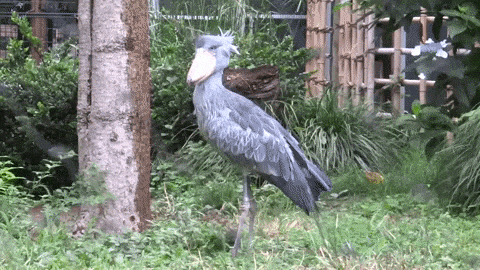
youtube
giphy
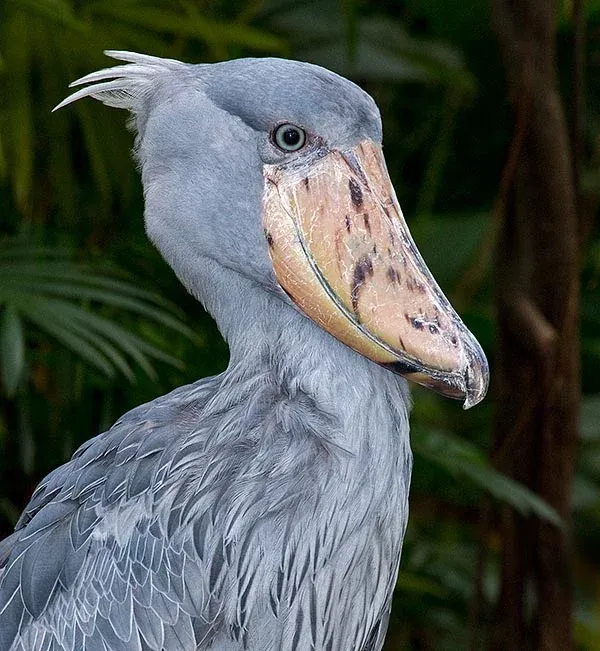
Bibliography
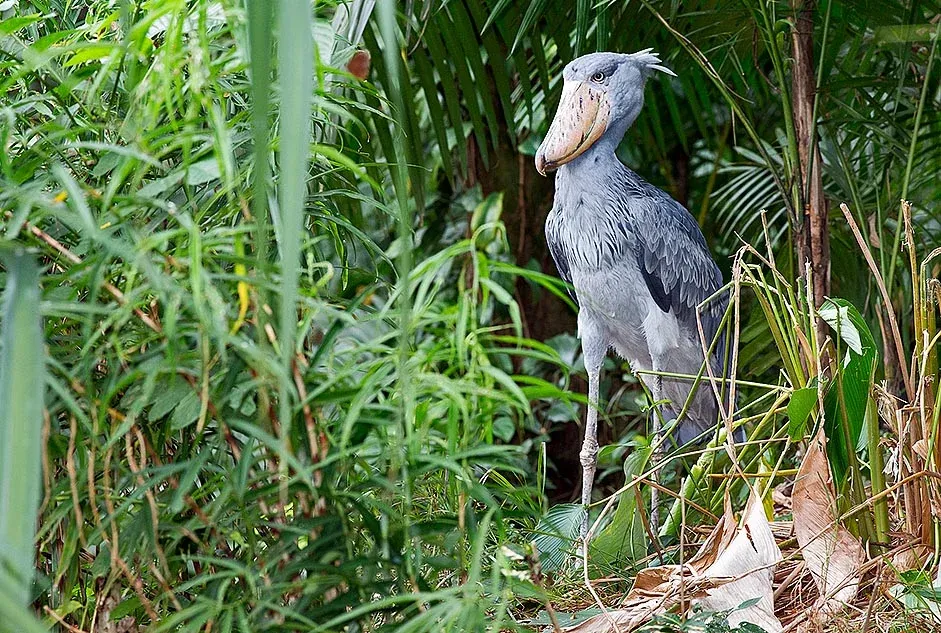
Bibliography
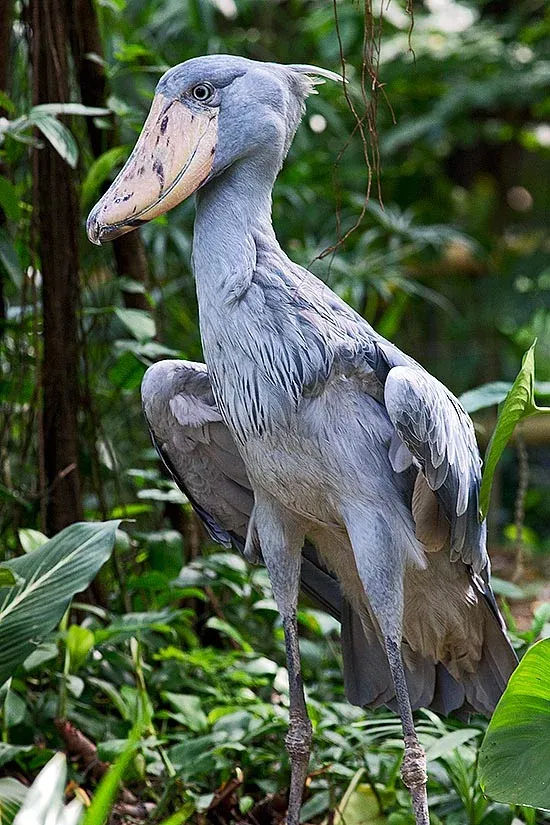
Bibliography
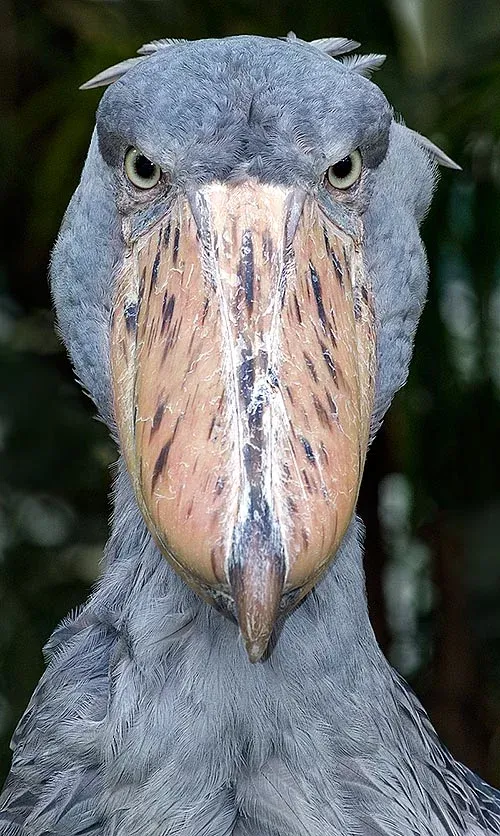
Bibliography
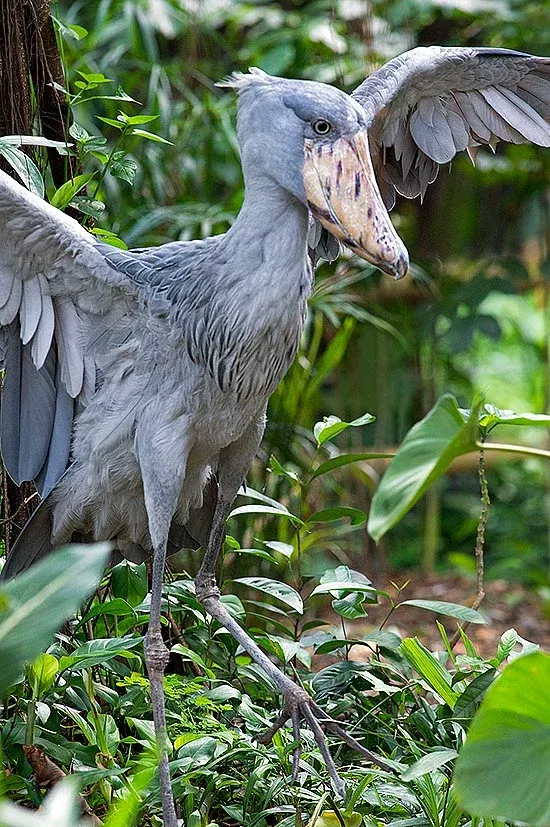
Bibliography

Actualmente se encuentra en peligro de extincion debido a Destrucción del hábitat, la utilización de los lugares de nidificación para el cultivo y pastoreo y Robo de crías para el comercio ilegal de aves.

The shoebill (Balaeniceps rex Gould, 1850) is a large pelecaniform bird, the only living genus (taxonomy) of the Balaenicipitidae family, it is a prehistoric bird which measures 1.20 m in length and up to 1.50 m in height, the females being slightly larger. small, It inhabits the eastern and tropical zone of Africa in swamps and riverbanks, from Sudan to Zambia. Specifically it is found in: Central African Republic, Congo, Rwanda, South Africa, Sudan, Tanzania, Uganda and Zambia, It can be found in Ethiopia, It breeds and feeds in seasonally flooded swamps where the predominant vegetation is a mixture of papyrus, reeds, cattails or cattails and herbs. Often found in areas with abundant floating vegetation such as papyrus; also uses non-permanent swamps without papyrus in Malagarasi (Tanzania) and Lake Victoria (Uganda).This species is famous for practicing cainism, a name given to the phenomenon that the strongest or older members of the offspring kill their younger or weaker siblings, it is common among many birds of larger size.It is currently in danger of extinction due to habitat destruction, the use of nesting sites for cultivation and grazing, and theft of hatchlings for the illegal bird trade.





